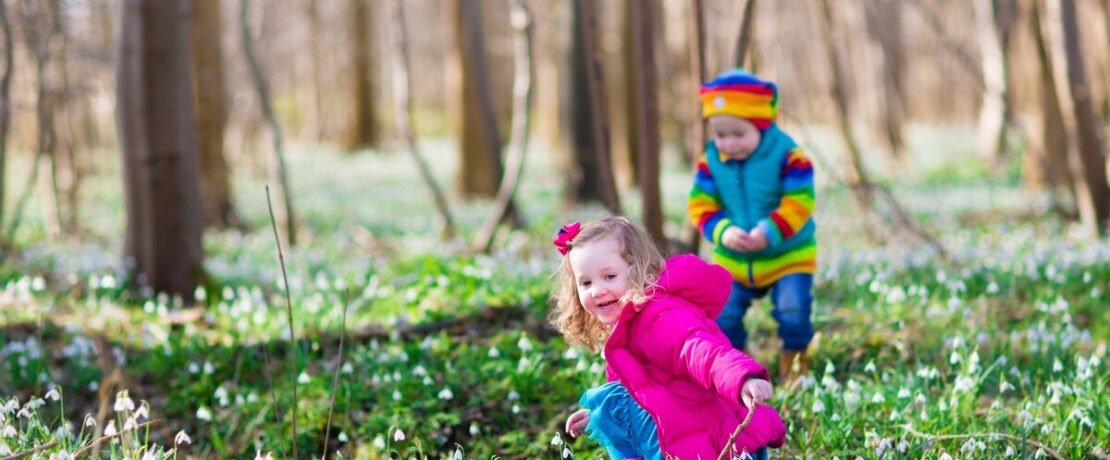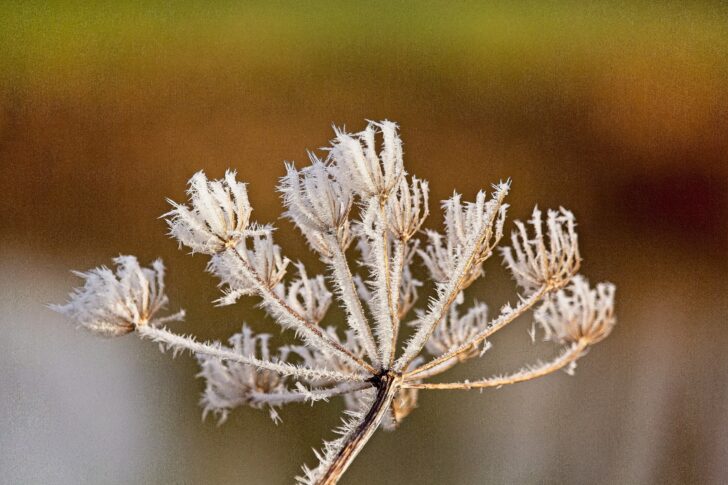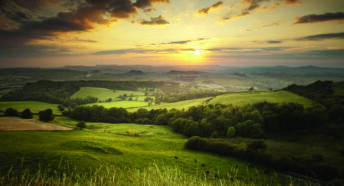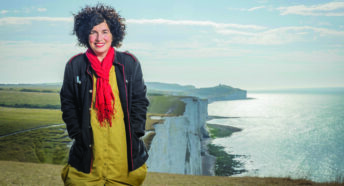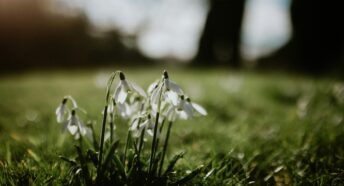Coming to the countryside near you: wildlife in January
After the indulgences and excitement of Christmas, the tranquillity of nature can be a balm. The new year brings resolutions of health, and people venture outside to shake off the sluggishness left over from the festive season. January may seem bleak but if you look a little closer there is still lots to enjoy out and about.
Frost and snowfall can reveal animal tracks that show the comings and goings of those animals not deep in slumber. The primroses began to unfurl here in Cornwall in November and are now reaching the peak of their performance. They will soon be joined by winter aconites, which bring a burst of colour to the woodland floor.
Snowdrops
With their nodding, milk-white heads, snowdrops are a much longed for sign of spring, typically pushing above ground around the end of February. However in recent years, they have begun appearing much earlier, from early January and in some cases, December.
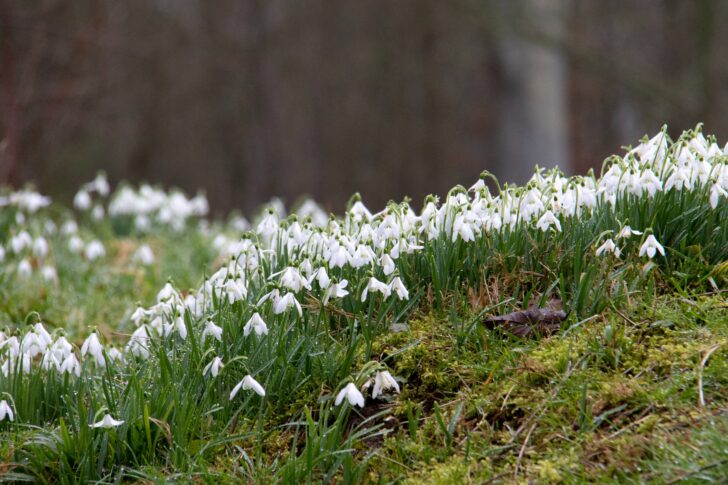
A non-native member of the amaryllis family, snowdrops are thought to have been brought here by monks and were first recorded in the 16th century, however some believe they have been here much longer. They have now naturalised and become a countryside staple during the winter months, growing in woodland and churchyards. They have tall green stems and green leaves, with white bell-shaped heads comprising six tepals; three outer and three inner, each one etched with green markings.
Snowdrops have been interpreted in many ways in folklore, from hope (of spring), to purity (its white petals) and even death. The Victorians believed you must never bring the flowers inside the house as it would lead to bad luck, or in some more extreme cases, the death of a family member. Some of these meanings could stem from snowdrops growing graveside in churchyards – or the fact that snowdrops are actually poisonous. And so, folklore stories would be woven to prevent consumption, accidental or intentional.
Hoar frost
There are multiple different types of frost, including host, advection, and radiation, which is more commonly known as hoar frost. The name ‘hoar’ is thought to derive from Old English and possibly refers to its feathery structure which is similar to a greying beard, and it’s this distinctive composition is what makes hoar frost instantly recognisable.
Made up of tiny ice crystals, hoar frost can form on plants and tree branches, the ground or other inanimate objects. It grows when a surface temperature is below freezing point and dew forms on top which then freezes creating lots of ice crystals connected to each other. Its length depends on how much water vapour there is in the air and in extreme cases, especially on still nights, it can reach a few inches long.
If you haven’t been fortunate to see hoar frost outside, then take a look in your fridge or freezer, as it is often found there too!
Portuguese man o’ war
When I was little, I had a Dorling Kindersley guide to the oceans that I loved. I used to pour over the pages that contained the dangerous ocean creatures, from stonefish to blue-ringed octopus and the stunning yet terrifying-sounding Portugueseman o’ war. Fast forward a couple of decades and these beautiful creatures have become common visitors to British waters in the autumn and winter as large swells wash them up onto our beaches.
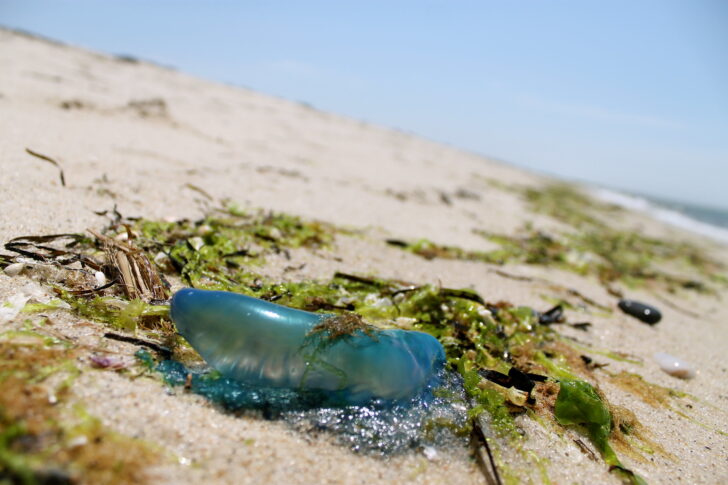
Portuguese man o’war belong to the jellyfish family; however, they are actually a hydrazoan – a colony of zooids, tiny creatures with different roles that support each other. There are four different main functions; floating, capturing prey, feeding, and reproducing. On the surface of the water floats a pastel air-sac, that sort of resembles a pasty in shape and is a similar size, and can range from blue and purple to pink. But beneath the waterline are long tentacles which can reach up to 30m in length and are full of stinging nematocysts which paralyse and kill small fish and crustaceans, giving it its nickname of ‘The Floating Terror’. These tentacles can also be very painful and can even cause death – so while beautiful, it’s worth admiring these creature from afar!
Snow bunting
From around October, snow buntings arrive on our coasts to overwinter on our coastline. Getting their name from the male’s white head and chest, snow buntings breed around the arctic. Around 10–15,000 birds migrate to us for the winter, staying until around February, and are typically found around the coastline in marine or intertidal habitats, occasionally straying onto farmland or inland in the North of England. However, 60 pairs breed here, spending all year living in Scotland, feeding on plant and grass seeds, insects and spiders.
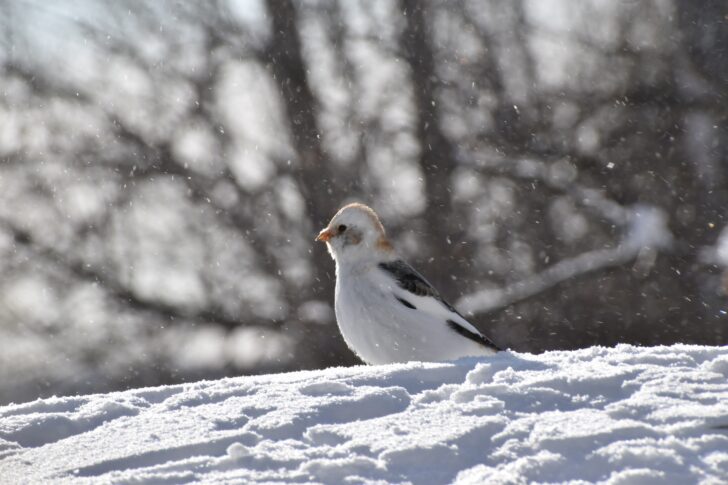
Snow buntings are currently amber listed due to range and population losses across Europe. Threats include habitat loss and climate change, so seeing one can be really special. It can be difficult to spot these stunning little birds, because although their plumage is distinctive, it helps them to camouflage on sandy or shingle beaches, so it may be a game of patience. Grab a flask of hot tea and a blanket, and you may be fortunate enough to spot one.
About the author
Alexandra Pearce-Broomhead is a writer and occasional Guardian Country Diarist from Cornwall. She writes about nature and place, and the human relationship with both. Her work has also been featured on BBC Wildlife and BBC Countryfile.
